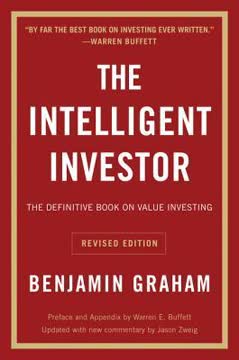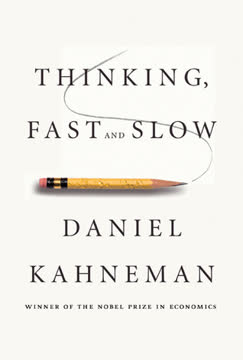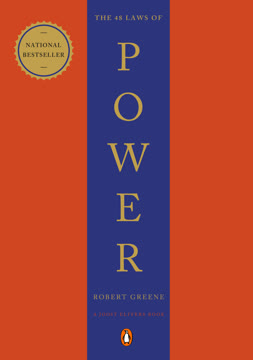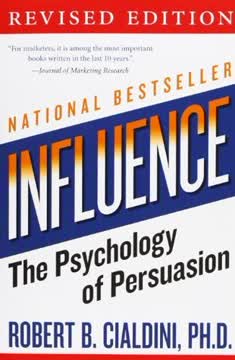重点摘要
财务素养是财富创造的关键
“我们每个人最强大的资产就是我们的头脑。如果训练得当,它可以创造巨大的财富。”
理解金钱的重要性。 财务素养在学校里并没有被教授,这使得大多数人无法有效地管理他们的财务。这种知识差距往往导致糟糕的财务决策和一生的财务困境。
教育至关重要。 要建立财富,必须投入时间和精力学习关于金钱管理、投资和财富创造的策略。这包括理解财务报表、税法和市场动态。
实际应用是关键。 仅仅获取知识是不够的,必须在现实世界中应用这些知识。这涉及到做出明智的财务决策,分析投资机会,并根据经验和不断变化的市场条件不断完善自己的财务策略。
资产把钱放进你的口袋,负债把钱拿走
“富人获取资产。穷人和中产阶级获取他们认为是资产的负债。”
正确定义资产。 许多人错误地认为他们的个人住宅或汽车是资产。然而,真正的资产会产生收入并随着时间的推移增值,而负债则需要花钱维护并贬值。
专注于获取资产。 为了建立财富,优先购买能产生收入的资产,如:
- 租赁物业
- 支付股息的股票
- 不需要你亲自管理的企业
- 知识产权的版税
减少负债。 减少那些不利于财富创造的开支,如:
- 豪华汽车
- 昂贵的假期
- 名牌服装和配饰
- 高利率的消费债务
专注于自己的事业以建立财富
“成为你所学的东西的错误在于太多人忘记了关注自己的事业。他们花一生的时间关注别人的事业并让那个人变得富有。”
发展副业。 在保持日常工作的同时,开始建立自己的业务或投资组合。这使你能够在主要工作之外创造额外的收入来源并建立财富。
投资于你的财务教育。 不断学习关于商业、投资和财富创造的策略。参加研讨会,阅读书籍,并与成功的企业家和投资者建立联系,以扩展你的知识和机会。
专注于长期财富创造。 不要仅仅依赖你的工作收入,集中精力建立能随着时间产生被动收入的资产。这种心态的转变对于实现财务独立和摆脱“老鼠赛跑”至关重要。
富人不为钱工作,他们让钱为他们工作
“穷人和中产阶级为钱工作。富人让钱为他们工作。”
转变你的视角。 不要用时间换取金钱,而是专注于创建能在没有你持续参与的情况下产生收入的系统和投资。这使你能够更有效地利用你的努力并创造财富。
理解被动收入的力量。 发展不需要你直接、持续劳动的收入来源,如:
- 房地产租金收入
- 股票和共同基金的股息
- 书籍、音乐或专利的版税
- 你拥有但不积极管理的企业的利润
利用他人的时间和金钱。 学会委派任务并利用他人的专业知识来增加你的财富。这可能涉及雇佣员工,与投资者合作,或将某些业务功能外包,以腾出时间进行更具战略性的活动。
克服恐惧并承担计算过的风险
“失败激励赢家。失败击败输家。”
将失败视为学习机会。 理解挫折和失败是通往财务成功之路上不可避免的一部分。不要害怕失败,而是将其视为宝贵的学习经验,可以帮助你完善策略并改进决策。
培养风险管理思维。 虽然承担风险是财富创造的必要条件,但必须计算并减轻潜在的负面影响。这包括:
- 彻底研究投资机会
- 分散投资组合以分散风险
- 为投资设定明确的退出策略
- 不断学习市场趋势和经济状况
尽管害怕也要采取行动。 认识到恐惧常常使人们无法采取必要的步骤走向财务成功。培养在机会面前采取行动的勇气,即使这些机会让你感到不舒服或有风险。
通过持续学习发展财务智力
“金钱是一种权力。但更强大的是财务教育。”
承诺终身学习。 财务世界不断变化,保持信息灵通对于做出明智的投资决策至关重要。每周花时间:
- 阅读财务新闻和市场分析
- 研究成功投资者及其策略
- 参加财富创造的研讨会和讲座
- 与财务成功人士建立联系
练习财务技能。 通过现实世界的经验应用你的知识,如:
- 管理模拟投资组合
- 分析公司的财务报表
- 制定并遵循个人预算
- 在各种情况下谈判交易
寻求多样化的观点。 接触不同的财务哲学和策略,以拓宽你的理解并发展全面的财富创造方法。
先支付自己并学会延迟满足
“如果你不能控制自己,就不要试图变得富有。”
优先储蓄和投资。 在支付账单或花费在非必需品之前,将一部分收入分配到储蓄和投资中。这种习惯确保你在不断建立你的资产基础。
培养纪律。 抵制即时满足的冲动,专注于长期财务目标。这可能包括:
- 量入为出
- 避免不必要的债务
- 将利润再投资而不是花掉
- 推迟大额购买,直到你建立了坚实的财务基础
利用压力作为动力。 当资金紧张时,利用压力激发创造性的解决方案来增加收入或减少开支,而不是动用储蓄或投资。
利用公司的力量合法减少税收
“富人发明金钱。他们明白金钱是一种幻觉,真正像驴子的胡萝卜。”
了解公司结构。 学习不同的商业实体(如有限责任公司、S公司、C公司)如何提供税收优势和资产保护。这些知识使你能够以最节税的方式结构你的投资和业务。
利用税延账户。 利用退休账户和其他税收优惠的投资工具来最大化你的财富创造潜力。例子包括:
- 401(k)和IRA
- 健康储蓄账户(HSA)
- 529大学储蓄计划
保持对税法的了解。 定期咨询税务专业人士并关注税法的变化,以利用合法的税收减免策略并避免代价高昂的错误。
投资于能产生被动收入的资产
“如果你想变得富有,你需要发展你的愿景。你必须站在时间的边缘,眺望未来。”
专注于现金流。 在评估投资时,优先考虑那些能产生稳定被动收入的投资,而不仅仅依赖于增值。这种方法提供更稳定的回报,并有助于建立长期财富。
多样化收入来源。 创建多个被动收入来源,以减少风险并增加整体财务稳定性。考虑以下投资:
- 租赁物业
- 支付股息的股票
- 点对点借贷
- 具有自动化系统的在线业务
再投资利润。 使用投资产生的收入来获取更多资产,创造加速财富创造的复利效应。
明智地选择导师并从他们的经验中学习
“人们不富有的主要原因之一是他们过于担心可能永远不会发生的事情。”
寻找成功的导师。 找到那些已经实现你所追求的财务成功的人,并从他们的经验中学习。这可能包括:
- 阅读成功投资者和企业家的传记
- 参加成功人士分享见解的活动
- 在你的行业或社区中寻找导师机会
从成功和失败中学习。 注意你的导师所经历的错误和挫折,因为这些教训可以帮助你避免在自己的旅程中犯类似的错误。
实施经过验证的策略。 适应并应用你的导师使用的成功策略和原则到你自己的财务努力中,同时根据你的个人目标和情况发展你独特的方法。
最后更新日期:
FAQ
What's "Rich Dad Poor Dad" about?
- Overview: "Rich Dad Poor Dad" by Robert T. Kiyosaki is a personal finance book that contrasts the financial philosophies of Kiyosaki's two father figures: his biological father (Poor Dad) and his best friend's father (Rich Dad).
- Core Message: The book emphasizes the importance of financial education, financial independence, and building wealth through investing in assets, real estate, and starting businesses.
- Rich vs. Poor Mindset: It highlights the differences in mindset between the rich and the poor, particularly in how they view money, work, and education.
- Financial Literacy: Kiyosaki stresses the need for financial literacy and understanding the difference between assets and liabilities to achieve financial success.
Why should I read "Rich Dad Poor Dad"?
- Financial Education: The book provides insights into financial education that are often not taught in traditional schools, helping readers understand how to manage money effectively.
- Mindset Shift: It encourages a shift in mindset from working for money to having money work for you, which is crucial for achieving financial freedom.
- Practical Advice: Kiyosaki offers practical advice on investing, entrepreneurship, and building wealth, making it a valuable resource for anyone looking to improve their financial situation.
- Inspiration: The book is motivational, inspiring readers to take control of their financial future and pursue their dreams of financial independence.
What are the key takeaways of "Rich Dad Poor Dad"?
- Assets vs. Liabilities: Understanding the difference between assets (which put money in your pocket) and liabilities (which take money out) is crucial for building wealth.
- Financial Literacy: Financial education is essential for making informed decisions about money and investments.
- Work for Money vs. Money Works for You: The rich focus on creating systems and investments that generate passive income, rather than solely relying on earned income.
- Mind Your Own Business: Focus on building and managing your own assets and investments, rather than just working for someone else.
What are the best quotes from "Rich Dad Poor Dad" and what do they mean?
- "The rich don’t work for money." This quote emphasizes the importance of creating passive income streams rather than solely relying on a paycheck.
- "It’s not how much money you make. It’s how much money you keep." This highlights the importance of managing expenses and investing wisely to build wealth.
- "The single most powerful asset we all have is our mind." Kiyosaki stresses the value of financial education and continuous learning to improve financial intelligence.
- "The love of money is the root of all evil." vs. "The lack of money is the root of all evil." This contrast shows the different perspectives on money between the rich and the poor.
How does Robert T. Kiyosaki define assets and liabilities in "Rich Dad Poor Dad"?
- Assets: According to Kiyosaki, assets are things that put money in your pocket, such as investments, real estate, and businesses.
- Liabilities: Liabilities are things that take money out of your pocket, like mortgages, car loans, and credit card debt.
- Common Misconception: Many people mistakenly consider their home an asset, but Kiyosaki argues it is a liability unless it generates income.
- Financial Literacy: Understanding this distinction is key to building wealth and achieving financial independence.
What is the significance of the "CASHFLOW Quadrant" in "Rich Dad Poor Dad"?
- Quadrant Overview: The CASHFLOW Quadrant categorizes income sources into four types: Employee (E), Self-Employed (S), Business Owner (B), and Investor (I).
- Quadrant Differences: Each quadrant represents a different approach to earning money, with the right side (B and I) focusing on passive income and wealth-building.
- Path to Financial Freedom: Kiyosaki encourages moving from the left side (E and S) to the right side (B and I) to achieve financial freedom.
- Mindset and Skills: Success in the B and I quadrants requires a different mindset and skill set, emphasizing financial education and entrepreneurship.
How does "Rich Dad Poor Dad" suggest overcoming fear and doubt in financial decisions?
- Fear of Losing Money: Kiyosaki acknowledges that everyone fears losing money, but emphasizes that managing fear is crucial for financial success.
- Learning from Failure: He encourages viewing failures as learning opportunities and using them to build resilience and financial intelligence.
- Taking Calculated Risks: The book advocates for taking calculated risks and not letting fear prevent you from pursuing investment opportunities.
- Mindset Shift: Developing a mindset that embraces challenges and sees them as opportunities for growth is essential for overcoming fear.
What role does financial education play in "Rich Dad Poor Dad"?
- Foundation of Wealth: Financial education is the foundation for building wealth and achieving financial independence.
- Understanding Money: It involves understanding how money works, how to manage it, and how to make it work for you through investments.
- Continuous Learning: Kiyosaki emphasizes the importance of continuous learning and staying informed about financial markets and opportunities.
- Empowerment: Financial education empowers individuals to make informed decisions and take control of their financial future.
How does "Rich Dad Poor Dad" address the concept of "working for money" vs. "money working for you"?
- Traditional Path: Many people follow the traditional path of working for money, relying on a paycheck for financial security.
- Passive Income: Kiyosaki advocates for creating systems and investments that generate passive income, allowing money to work for you.
- Financial Freedom: Achieving financial freedom involves building assets that provide income without active involvement.
- Mindset Change: Shifting from a mindset of working for money to having money work for you is key to achieving long-term financial success.
What is the "Rich Dad" philosophy on taxes and corporations in "Rich Dad Poor Dad"?
- Tax Advantages: The rich use corporations to take advantage of tax benefits and protect their wealth.
- Legal Loopholes: Corporations offer legal loopholes that allow the rich to minimize taxes and maximize profits.
- Financial Education: Understanding tax laws and corporate structures is part of financial education and wealth-building.
- Playing Smart: Kiyosaki emphasizes the importance of playing smart and using the system to your advantage, rather than being exploited by it.
How does "Rich Dad Poor Dad" suggest building a strong financial foundation?
- Start Early: Begin building your financial foundation early to take advantage of compound interest and long-term growth.
- Invest in Assets: Focus on acquiring income-generating assets, such as real estate, stocks, and businesses.
- Financial Discipline: Practice financial discipline by managing expenses, avoiding unnecessary debt, and reinvesting profits.
- Continuous Education: Continuously educate yourself about financial markets, investment strategies, and wealth-building techniques.
What are the steps to achieving financial freedom according to "Rich Dad Poor Dad"?
- Set Clear Goals: Define your financial goals and create a plan to achieve them, focusing on building assets and passive income.
- Increase Financial Literacy: Continuously improve your financial literacy through education, reading, and learning from mentors.
- Take Action: Actively seek investment opportunities and take calculated risks to grow your wealth.
- Build a Network: Surround yourself with like-minded individuals and mentors who can support and guide you on your financial journey.
评论
读者称赞《富爸爸穷爸爸》在财务知识和财富构建策略方面提供了令人耳目一新的见解。许多人认为这本书改变了他们对金钱的看法,并激励他们掌控自己的财务。然而,一些批评者认为书中的建议过于简化,可能存在风险。尽管意见不一,这本书依然具有很大的影响力,引发了关于财务教育的讨论,并挑战了传统的工作和财富观念。
Rich Dad Series





Similar Books




















